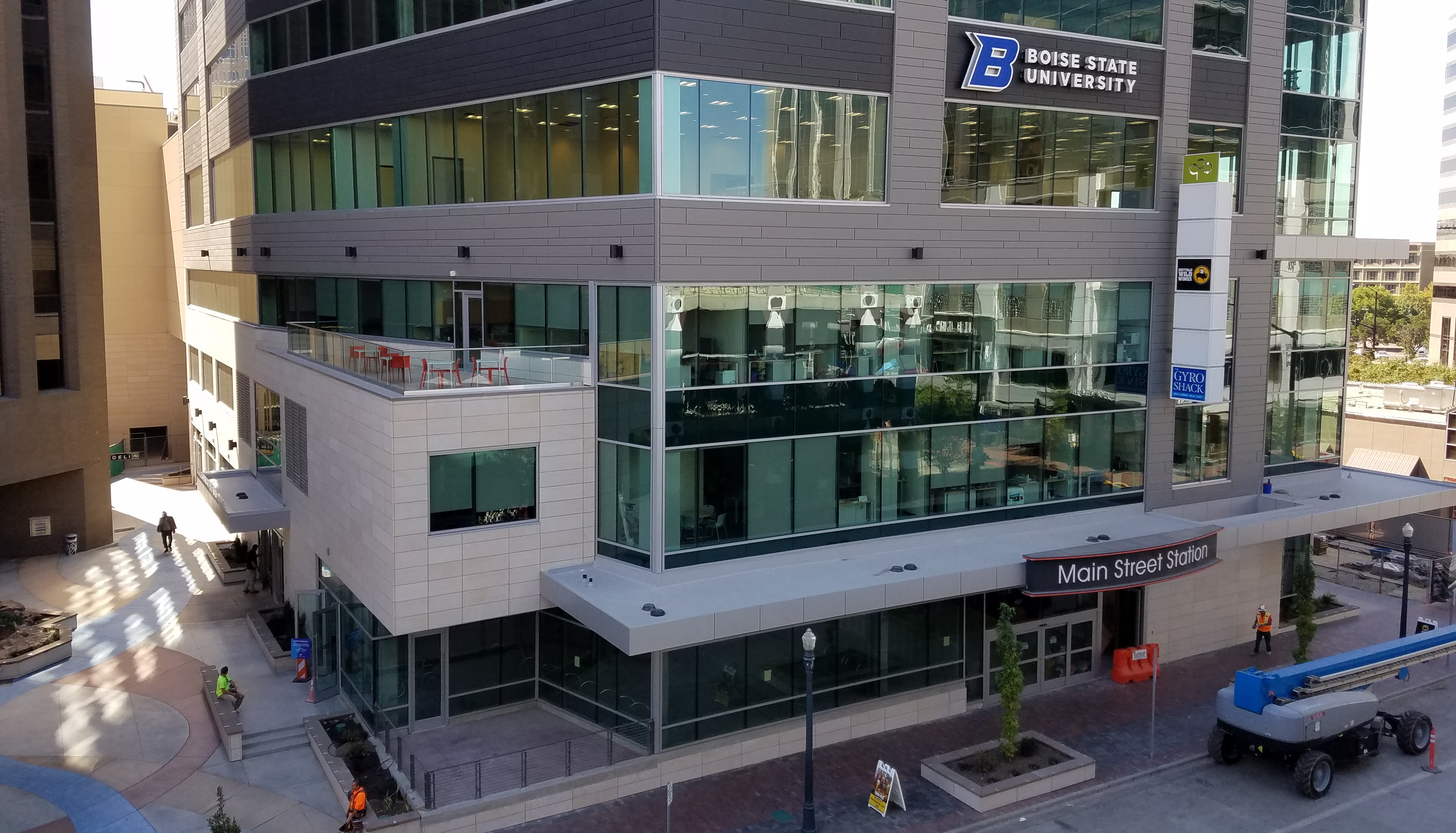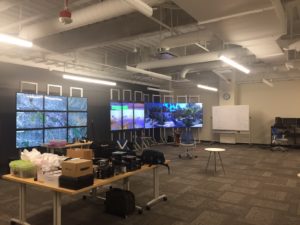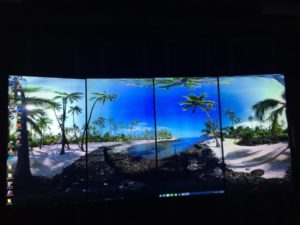
We recently had the opportunity to tour Boise State University’s new Computer Science building and spent some time with Dr. Steve Cutchin in the Computer Graphics and Visualization Lab. The new location opened in August, 2016 and is in the heart of downtown Boise at City Center Plaza. The Boise State portion of the building is located on the east side of the building. The Department of Computer Science has a first floor lobby which connects to the second and third floors where classrooms, offices and labs are located.

Boise State Universitiy's Computer Graphics and Visualization Lab
We found the Computer Graphics and Visualization Lab on the 3rd floor. It’s a welcoming environment with a large lounge area for students to hang out and study right outside of the lab (added bonus… there’s a ping pong table)! When you walk into the lab itself, the first thing you notice is the walls of TV’s. They have two walls of TVs, one set which are 4K TVs. They also have two HTC Vives and multiple phone based VR headsets, including 4 GearVR’s with Samsung phones as well as a Sony Xperia 4K Smartphone.
Most of the work and research done in the lab is performed by undergraduates. Their HoloShots project is what we spent the bulk of our time viewing. In this particular project students go on photo shoots and learn how to capture immersive content. They’re testing and developing a variety of 360’ stereo capture devices to allow for real-time navigation in photorealistic environments. They use specially assembled camera rigs on robotic mounts to capture 360’ immersive stereo at very high resolution (over 100 megapixels for each eye).
We had the chance to journey through some of locations they’ve shot and it was pretty dang cool! We knew we were in for a treat as soon as Dr. Cutchin turned down the lights and asked us to put on our 3D glasses. We started in Baja California and were struck by the quality of the footage. Their focus in the project stays on the quality even if this means that the user needs to move through the image more slowly. As the scene rotates it sometimes transitions at 24 frames per second vs a more standard 60 frames per second. Again, they aren’t as concerned with the speed, but rather ensuring that they’re creating a photorealistic environment. From Baja we traveled to the Idaho State Capitol. One of the challenges we discussed with the Capitol shoot was the color variance that occurred when they shot the rotunda due to the lighting. (Close pillars were very light vs. in the distance a darker color.) Students are looking to create an algorithm to fix

Image from the Hawaii shoot
these issues as they come up. From the Capitol building we hopped a few blocks south over to the Grove Plaza. As we looked at the surrounding buildings we discussed some of the cool ways the technology could be applied in development and construction projects. While renderings and even some of the models do a great job in visually representing new construction it isn’t the same as the photorealistic environment that they are able to create. To drop a new building right into this environment and then show it to city zoning and planning or neighborhood planning would likely help significantly with the approval process (or disapproval if they didn’t like what they saw). Or, in the case of a restoration project, you could do a full restoration of a building within the program in order to visually show that you’re maintaining the original integrity of the structure and the surroundings. The options really are endless.

Snapshot of one of the student shoots in Las Vegas
We kept moving through our journey and headed back to California and into the Redwood Forest. It was extraordinary. Some have argued that if people visit locations through immersive technology like this they won’t actually go, but I would vehemently argue that that could not be further from the truth. It gives you just enough of a taste and you want more. We couldn’t leave California without popping over to San Francisco and Los Angeles of course. In San Francisco we toured Pier 39 and in LA we were at the Hollywood Walk of Fame in front of the historic TCL Chinese Theater. Being at these high traffic locations brought up an interesting conversation. What do you do with people that move around as you’re filming and pop up in several places in your scene? Of course they’re working on this issue and some of his students are figuring out how to remove auto redundancies within the experience. Another issue they have to contend with popular sites is just keeping people away. People are always so curious and want to know what’s going on which can make the shoot quite difficult to execute. I can’t help but think what unique experiences these students are getting being able to travel to interesting locations and shoot content. There was even a shoot in Hawaii last year! They held a competition between twelve students and the top four traveled to Hawaii for the shoot. How fun would that be as a student?
This is just a glimpse into some of the exciting and innovative things happening within the CS department. We’re excited to continue working with both staff and students in this space and can’t wait to see what they continue to produce!



Recent Comments